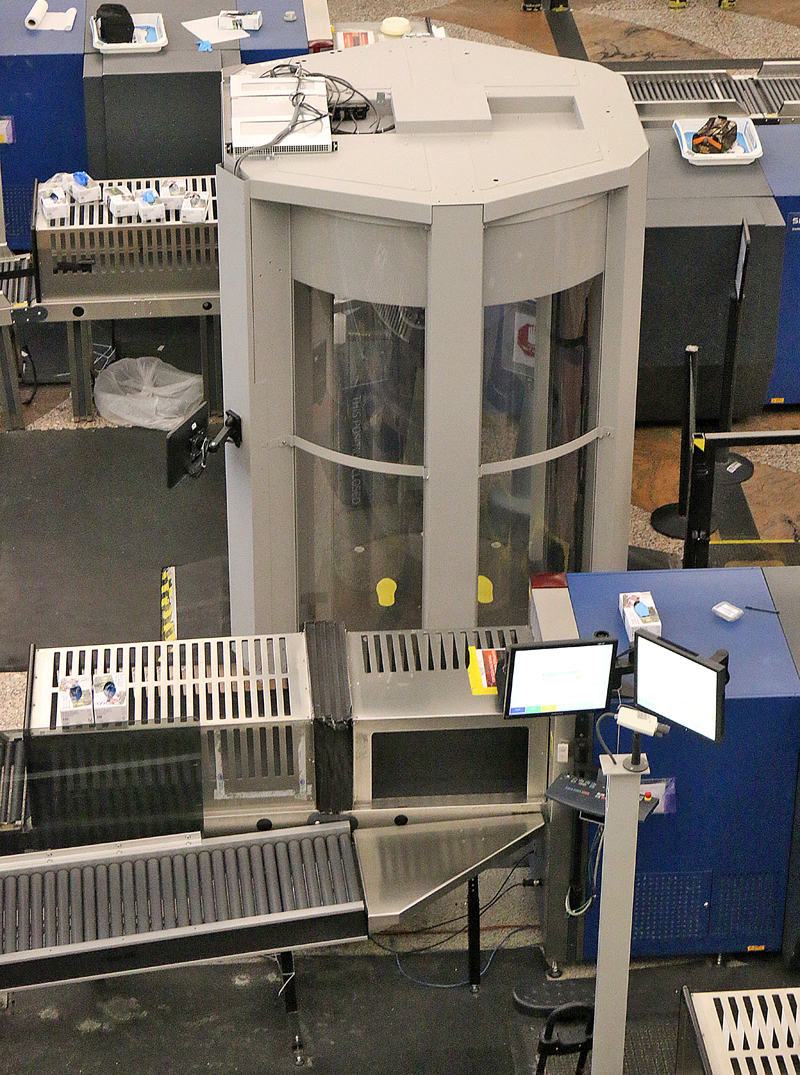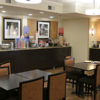Christmas is arriving this coming Saturday, December 25, 2021 — which means that people who are traveling via airplane are likely carrying gifts to relatives or friends with whom they are visiting in what is expected to be a busy holiday season at airports all across the United States…
6 Tips on How to Travel With Gifts Via Airplane
…but you should know some rules, policies, and recommendations pertaining to carrying items through the airport and aboard the airplane prior to traveling — lest you have those gifts opened by an agent of the Transportation Security Administration at the security checkpoint at the airport.
Fortunately, the Transportation Security Administration gives guidelines as to what you should and should not do when transporting items with you while you travel — so check your list twice to not only ensure that you are bringing the right items along with you; but also how to transport them if you want them to reach their recipients untouched.
1. Do Not Wrap Gifts Prior to Traveling.

As with any other item, wrapped items are screened at the security checkpoints of airports — and chances are good that they will be scanned without incident. However, if a wrapped item alarms the technology which screens the items at a security checkpoint at the airport, it will need to be unwrapped to determine if it is a threat to security.
For best results, travel with the items unwrapped. You can instead place items in gift bags or gift boxes; or you can use a festive bow for easy access and resolution.
You can also consider carrying the gift wrap with you and wrap gifts after you are finished traveling but prior to arriving at your destination.
2. Research Exactly What Items You Can Take With You — Or Whether They Can Travel At All.
If you are uncertain as to whether an item should be packed in a carry-on bag or checked luggage, you can go to the official Internet web site of the Transportation Security Administration and search for the item in question using the helpful “What can I bring?” feature. Simply type in the name of the item and find out if you can carry it through a security checkpoint at the airport or if it should be checked.
You can also send a message to the official Twitter account of the Transportation Security Administration and use @AskTSA to ask how best to travel with a specific food or other type of item.
3. Traveling With Electronics.

With the advances in technology these days, electronics are popular gift items and can generally travel in carry-on luggage, as all electronics which are larger than a mobile telephone should be placed in a bin with nothing above or below it so that an agent of the Transportation Security Administration can get a good X-ray image to ensure that no one has tampered with it — so if you have a tablet, laptop computer, or the latest gaming console, you can carry it aboard the airplane.
Drones are permitted through the security checkpoint at the airport — but ensure that you check with the airline on which you will be traveling as a passenger for specific travel policies for drones.
4. Traveling With Batteries.

Often with electronics come batteries — and all “dry” batteries can be carried through a security checkpoint at the airport. Examples of “dry” batteries include AA, AAA, 9-volt, C, and D batteries.
Lithium batteries with 100 watt hours or less which are installed in an electronic device are okay to carry in general; but loose lithium batteries are prohibited in checked bags. The Federal Aviation Administration of the United States has very specific regulations on lithium batteries — as well as an illustrated guide of Airline Passengers and Batteries, which is a file that is available for downloading in portable document format — as they can be considered hazardous materials. Examples of lithium batteries include — but are not exclusive to — power banks, cell phone battery charging cases, rechargeable and non-rechargeable lithium batteries, cell phone batteries, laptop batteries, power banks, external batteries, and portable rechargers.
Spare or uninstalled lithium ion batteries and lithium metal batteries — including power banks and cell phone battery charging cases — must be carried in carry-on baggage only. When a carry-on bag is checked at the gate or at planeside, all spare lithium batteries and power banks must be removed from the bag and kept with the passenger in the aircraft cabin. The battery terminals must be protected from short circuit. This covers spare lithium metal and spare rechargeable lithium ion batteries for personal electronics — such as cameras, mobile telephones, laptop computers, tablets, watches, and calculators as only six of numerous items. This also includes external battery chargers — or portable rechargers — containing a lithium ion battery.
Size limits: Lithium metal — or non-rechargeable — batteries are limited to two grams of lithium per battery. Lithium ion — or rechargeable — batteries are limited to a rating of 100 watt hours per battery. These limits allow for nearly all types of lithium batteries used by the average person in their electronic devices. With airline approval, passengers may also carry up to two spare larger lithium ion batteries between 101 watt hours and 160 watt hours per battery; or Lithium metal batteries between two grams and eight grams per battery. This size covers the larger after-market extended-life laptop computer batteries and some larger batteries used in professional audio/visual equipment.
Quantity limits: None for most batteries — but batteries must be for use by the passenger. Batteries carried for further sale or distribution — such as vendor samples as one example — are prohibited. Two spare batteries is the maximum limit per person for the larger lithium ion batteries described above — such as 101–160 watt hours per battery.
Batteries must be protected from damage; and battery terminals — usually the ends — must be protected from short circuit as per regulation number 49 CFR 175.10(a)(18). For example, the terminals must not come in contact with other metal. Methods of protection include:
- Leaving the batteries in their retail packaging
- Covering battery terminals with tape
- Using a battery case
- Using a battery sleeve in a camera bag
- Putting them snugly in a plastic bag or protective pouch.
Damaged or recalled batteries and battery-powered devices — which are likely to create sparks or generate a dangerous evolution of heat — must not be carried aboard an aircraft in either carry-on bags or checked luggage unless the damaged or recalled battery has been removed, or otherwise made safe. The airline may offer further public guidance on transporting individual recalled products.
For additional information on recalls, visit the Consumer Product Safety Commission, manufacturer, or vendor website.
Tip: Newer lithium ion batteries have the Wh — or watt hour — rating marked on them. To calculate Wh, multiply the battery voltage by the Amp hours, or Ah.
Articles at The Gate which pertain to lithium batteries — some of which include fires started by those batteries — include:
- Lithium Ion Batteries Banned From Being Transported as Cargo in Canada
- Hewlett-Packard Announces Battery Safety Recall and Replacement Program
- All Samsung Galaxy Note7 Devices Banned From Airplanes
- Electronic Cigarettes Banned on Airplanes
- Smoke Reported From Main Battery of Japan Airlines Boeing 787 “Dreamliner” Aircraft
- Breaking: FAA Grounds All Boeing 787s
5. How to Pack Food and Beverages For Travel.

You can generally carry such items as chocolates, popcorn, pretzels, popcorn, and baked goods — such as cookies, pies, and cakes — through the security checkpoint of an airport without an issue, as solid foods are basically acceptable…
…but if you can spill it, spray it, spread it, pump it, or pour it, then the food item should be packed in a checked bag if the container is larger than 3.4 ounces.
If you are transporting the following items, please keep in mind:
- Delicious preserves, jams, jellies, and syrups — whether they are homemade or purchased in a store — fall in the category of a liquid.
- Cheese gets a little complicated: if the cheese is a:
- Solid block, it can be carried through a checkpoint.
- Soft, spreadable cheese, it should be packed in a checked bag.
- Beverages — such as egg nog, wine, and champagne — should be packed in checked baggage. However, beverages with:
- Greater than 24 percent alcohol by volume — but not more than 70 percent alcohol — are limited in checked bags to five liters per passenger.
- Up to a maximum volume of 24 percent alcohol are not subject to any limits in checked bags.
- Miniature bottles of alcohol are allowed in carry-on luggage; and they must fit comfortably in a single, quart-sized resealable plastic bag — with a limit of one quart bag per passenger.
6. How to Pack Traditional Holiday Gifts For Travel

Although snowboards, snowshoes, advent calendars, and ice skates can be carried through the security checkpoint at an airport with no issue, ensure with the airline on which you are traveling as a passenger as to whether those can be stored in the overhead storage bin aboard the airplane.
Some items do require special guidelines and rules.
- Perfume can be carried through a checkpoint if it is no greater than 3.4 ounces or 100 milliliters and fits into a one quart-sized resealable plastic bag — but if it is in a decorative bottle which does not fit in your one quart-size bag, the best plan of action is to pack it in a checked bag.
- Snow globes which appear to contain fewer than 3.4 ounces of liquid — which is approximately the size of a tennis ball — can be packed in a carry-on bag; but only if the entire snow globe — including its base — is able to fit into a one quart-sized resealable plastic bag. Larger snow globes should be packed in a checked bag — otherwise, you may be required to opt to leave your prized snow globe behind at the security checkpoint at the airport.
- All jewelry can be carried through the security checkpoint of the airport — but wearing bulky jewelry or large belt buckles is not recommended because they may trigger an alarm which results in the need for a “pat-down.”
- Candles which are:
- Solid traditional designs can be placed in a carry-on bag.
- Gel-type candles should be packed in a checked bag.
- Skis and ski poles should travel as checked baggage.
Final Boarding Call

Following these rules, guidelines, and policies of the Transportation Security Administration is the best way to ensure that your gift arrives at its recipient under the best of circumstances — and knowing them can also help with choosing a gift for that someone special for the holidays.
Gift cards may be somewhat impersonal; but they are small, easy to transport, and will pass through the security checkpoint at the airport — but before you purchase any gift cards, please first read this article pertaining to 9 Reasons to Be Careful About Buying Gift Cards here at The Gate.
All photographs ©2016, ©2017, and ©2020 by Brian Cohen.

